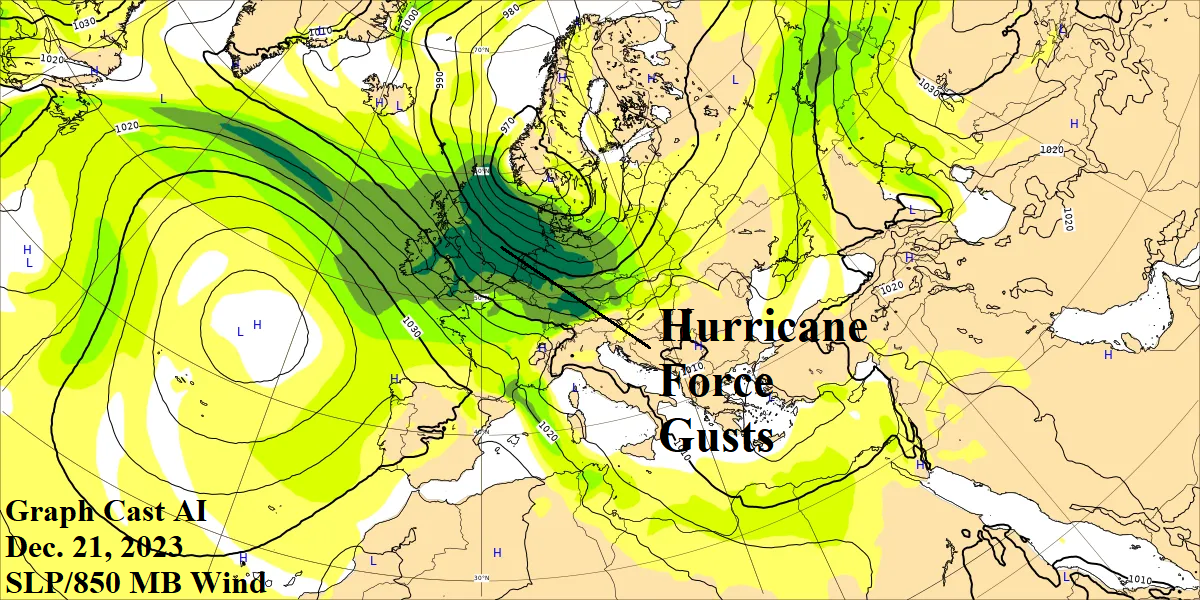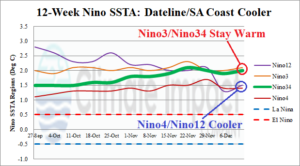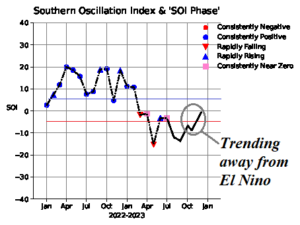
Cold Start to December Northern Europe/Western Russia Ends
12/17/2023, 3:55 pm EST
Graph Cast AI Identifies High Wind Events for Western Europe
12/20/2023, 12:38 pm EST
Fig. 1: The NCEP CFS V2 Nino34 SSTA favors a big change in 2024.
Discussion: The Community Earth System Model (CESM) projects developing La Nina for MAY/JUN/JUL 2024 (Fig. 1). Other forecast models have similar projections with varying speed of (La Nina) development. Elsewhere, global SSTA forecast models maintain a warm signature particularly in the Indian Ocean where positive Indian Ocean dipole (+IOD) ends and across both the North Pacific and North Atlantic as marine heat waves (MHW) expand.
Currently, El Nino is vividly present in the tropical East Pacific (Fig. 2). Many MHW’s are across each hemisphere creating unusually warm ocean surface in the middle latitudes. The daily SSTA for the North Pacific basin is +0.80C while the North Atlantic is +0.83C. During Q1/2024 as the atmosphere continues to cool, latent heat released by cooling oceans promises to fuel energetic mid-to-late winter storm tracks.
The Nino SSTA regions are showing signs of change as near the Dateline and off the South America northwest coast cooling has taken place while robust El Nino warmth continues in the east-central equatorial region (Fig. 3). In the subsurface, the eastern equatorial Pacific upper ocean heat remains impressive, although cooling in the equatorial West Pacific subsurface has edged past the Dateline (Fig. 4).
Throughout El Nino 2023, various climate diagnostics have indicated while oceanic El Nino is robust, the atmospheric El Nino has lagged. This characteristic continues as normally negative southern oscillation index (-SOI) when El Nino is present has recently trend toward neutral (Fig. 5).

Fig. 2: The daily global SSTA analysis and regions of key influence on global climate are highlighted.

Fig. 3: The 12-week Nino SSTA monitor indicates Nino3/Nino34 remain robustly warm while near the Dateline and off the northwest coast of South America have cooled.

Fig. 4: The equatorial Pacific Ocean upper ocean heat anomalies.

Fig. 5: Monthly southern oscillation index observations dating back one year.
![Climate-Impact-Company-logo-sm[1]](https://climateimpactcompany.com/wp-content/uploads/2023/08/Climate-Impact-Company-logo-sm1.png)
